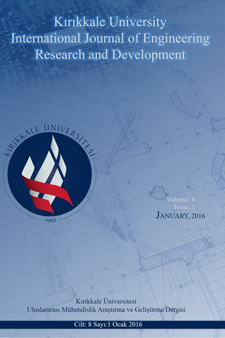Mathematical Modelling, Simulation and Application of Full Flight Helicopter Simulator
Mathematical Modelling, Simulation and Application of Full Flight Helicopter Simulator
Mathematical Modelling Simulation, Full Flight Simulator,
___
- ICAO (2014). Safety Report. International Civil Aviation Organization. http://www.icao.int/safety/Documents/ICAO_2014%20Safety%20Report_final_02042014_web.pdf Access Date:30.07.2015
- Dahlstrom, N., Dekker, S., Van Winsen, R., & Nyce, J. (2009). Fidelity and validity of simulator training. Theoretical Issues in Ergonomics Science, 10(4), 305-314.
- MSI, http://www.milscint.com/tr/simulator-egitim-merkezi-kazandirdi/ Access Date:25.07.2015
- Havelsan Simulator Orientation Document (2007)
- Full flight simulator. (2016, January 31). In Wikipedia, The Free Encyclopedia. Retrieved 07:55, March 12, 2017, from https://en.wikipedia.org/w/index.php?title=Full_flight_simulator&oldid=702545713
- Hays, R. T., Jacobs, J. W., Prince, C., & Salas, E. (1992). Requirements for future research in flight simulation training: Guidance based on a meta-analytic review. The International Journal of Aviation Psychology, 2(2), 143-158.
- Salas, E., Bowers, C. A., & Rhodenizer, L. (1998). It is not how much you have but how you use it: Toward a rational use of simulation to support aviation training. The international journal of aviation psychology, 8(3), 197-208.
- Tichon, J.G., Wallis, G., Riek, S. & Mavin, T. (2014). Physiological measurement of anxiety to evaluate performance in simulation training. Cogn Tech Work.
- Etkin, B. & Reid, L.D. (1996), Dynamics of Flight - Stability and Control, Third Edition, John Wiley & Sons, Inc.
- McCormick, B. W. (1995), Aerodynamics, Aeronautics and Flight Mechanics, Second Edition, John Wiley & Sons, Inc.
- Yayın Aralığı: 2
- Başlangıç: 2009
- Yayıncı: -
KOBİ’LER İçin KOSGEB Destek Modellerinin Çok Ölçütlü Karar Verme Yöntemleri İle Sıralanması
Mathematical Modelling, Simulation and Application of Full Flight Helicopter Simulator
Araç Rotalamada Karbon Ayakizi ve Endüstriyel Bir Uygulama
Bensu KAPLANSEREN, Betül MERCAN, Büşra ÖZDEMİR, Hatice Hazel KADIOĞLU, Çağrı SEL
B4C Takviyeli Magnezyum (AZ91) Matrisli Kompozitlerin Mikroyapısal Karakterizasyonu
ERP Kurulum Sürecinin Tamamlanmasının Ardından Modelleme Çalışmalarına Geçiş
Design of Remotely Controlled Hydraulic Bottle Jack for Automobile Applications
Aniekan IKPE, Aniekan IKPE, İkechukwu OWUNNA
Akif DURDU, Üzeyir İlbay BOZKURT, Mehmet Celalettin ERGENE
Türkiye’deki Endüstri Mühendisliği Eğitiminin Mezun Görüşlerine Dayalı Analizi
Ukbe Usame Uçar, Selçuk Kürşat İşleyen
Clustering-based Sales Forecasting in a Forklift Distributor
Pratiwi Eka PUSPİTA, Tülin İNKAYA, Mehmet AKANSEL
Afyon Kilinin Porselen Karo Bünyelerinde Kullanımının Araştırılması
